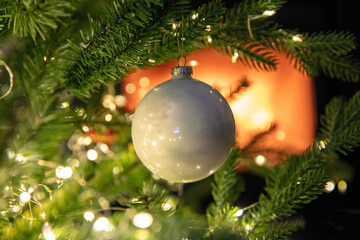
At AFC Urgent Care Southington, we prioritize your well-being for a healthy and festive holiday season. Picture decorating your Christmas tree without the worry of an allergic reaction overshadowing your celebrations. Christmas Tree Syndrome, an allergic response to both real and artificial trees, has the potential to dampen your holiday spirit. Fear not, as we offer guidelines to safeguard your festivities and ensure a season free from sneezing and sniffles.
Understanding Christmas Tree Syndrome:
This allergic reaction can be triggered by various factors, including the tree's fragrance, pine resin, or molds found on real Christmas trees. The symptoms encompass an itchy nose, watery eyes, chest pains, and coughing, affecting individuals of all ages, from adults to children and even infants. Asthma sufferers, in particular, should exercise caution, as December sees a significant number of hospital admissions due to mold growth on Christmas trees.
Mold's Stealthy Presence:
While mold is often visible in homes, not everyone realizes that it also naturally grows on Christmas trees. Turning on the heating exacerbates the issue, as the warmer temperature accelerates mold growth. It's crucial to be proactive in preventing Christmas Tree Syndrome to ensure a holiday season filled with joy, not discomfort.
Spotting Christmas Tree Syndrome Symptoms:
- Wheezing
- Coughing
- Itchy Nose
- Watery Eyes
- Fatigue
- Sleep Troubles
- Dark Circles Under the Eyes
Uncovering the Causes of Christmas Tree Syndrome:
Mold and Pollen:
- Mold spores adhere to live pine trees due to moisture accumulation on leaves, branches, and bark.
- Pine trees can harbor 53 different mold types, many identified as potential respiratory allergens.
- Apartments with live Christmas trees exhibited a 6-fold increase in airborne mold.
Pine Scent:
- The distinctive pine scent originates from terpenes in tree sap, causing irritation and allergies.
Dust Mites:
- Common triggers for respiratory allergies, dust mites can be transported by both live and artificial trees.
Insect Droppings:
- Pests like cockroaches may leave droppings on live and artificial trees, triggering allergies.
Chemical Treatments:
- Chemicals used on Christmas tree farms may induce symptoms like coughing and wheezing.
Nut Allergens:
- Allergies to pine nuts, produced by certain pine tree species, can also manifest.
Preventive Measures:
For Artificial Trees:
- Exercise caution when decorating with spray snow, as aerosolized chemicals can cause reactions.
- Properly store the tree during the off-season, protecting it from dust and dirt.
- Wipe down the tree, ornaments, and decorations before setting them up in your home.
For Real Trees:
- Avoid direct contact with sap by wearing gloves and long sleeves.
- Before bringing the tree inside, shake it out and spray it with water to eliminate pollen and mold.
- Allow the tree stump to rest in water and dry outdoors for a few days to inhibit mold growth.
Visit AFC Urgent Care Southington:
If you suspect Christmas Tree Syndrome affecting you or a loved one, seek professional assistance at AFC Urgent Care Southington. Our dedicated team is available seven days a week, and we gladly accept most insurance plans. Whether you prefer to walk in, schedule an appointment, or give us a call, we're here for you. Explore our user-friendly online payment system for a seamless check-in and check-out experience. Best wishes for a happy holiday season, and may you stay healthy!